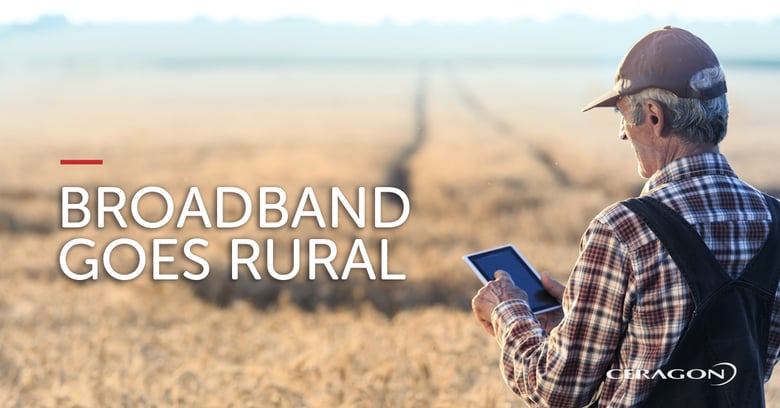The deployment of 4G and even 5G fixed and mobile wireless services in rural areas gives rise to unique opportunities and challenges that include subscriber-less services, service coverage, and wireless-transport derived challenges.
Subscriber-less services
One major challenge that arises in rural deployments is subscriber-less services mode, where revenues are often derived from other service providers’ subscribers in the form of roaming fees. This is true for voice and data services, in 3G, 4G and 5G environments.
Despite being one-step removed (not direct subscribers), the speed and quality of service is still crucial. In fact, in subscriber-less services mode, the effect of low service availability or downtime directly impacts revenues. In contrast, in the case of subscriber-based service mode, low service availability or downtime is only reflected as churn when an operators’ direct subscribers experience ongoing or repeated service degradation.
Service coverage
Service coverage is another major challenge that arises in rural deployments. It is often challenging to achieve coverage in remote locations that are usually sparsely populated or unpopulated, for example wide-open spaces and places along highways, national parks, deserts, mountainous terrains, etc. However, despite these challenging environmental conditions, achieving wide coverage is essential to the validity of an operator’s business case as the areas that are the hardest to cover are actually the ones that are the most attractive in terms of national-roaming agreements. A new paradigm for service coverage in remote areas derive from the introduction of IoT applications, which, as described in our previous post, require much deeper coverage than the one offered to mobile subscribers.
Wireless-transmission challenges
The abovementioned challenges heavily reflect on wireless transmission. Although well-suited for rural geographies and deployments, many wireless transmission systems also pose challenges that include long distance, power efficiency, reliability and maintenance.
Long distance
Going the maximum distance is essential to minimize sites, reduce costs, and maximize operational efficiency. In order to reach distance locations where service is essential, operators can utilize ultra-high power radios, and still eliminate or reduce the need for relay sites (which are often very hard to establish). This also facilitates the use of smaller antennas, which have significant impact on both CAPEX and OPEX as well as tower load.
Power efficiency
With some sites that are “off-the-grid,” power consumption matters and translates into time and money spent on generator maintenance and refueling. In certain scenarios, reducing the wireless transmission equipment power consumption allows the use of a smaller generator.
Shelter-less solution
In some cases, a typical split-mount or all-indoor solution requires a more complicated site acquisition as it requires an indoor cabinet space. In order to resolve this, an all-outdoor long-haul solution will best fit.
High reliability & low maintenance
Due to distance, geography and weather/environmental conditions, physically accessing sites can be time consuming and challenging. For this reason, reliability and availability are imperatives for service assurance and revenue protection. This calls for a reliable, flexible, remotely upgradable and low maintenance wireless transmission solution.
The solution
The optimal solution for these challenges is to implement a high-power, all-outdoor solution that is capable of delivering ultra-high capacity.
The Ceragon FibeAir IP-20C-HP offers rural operators an all-outdoor solution for remote site connectivity.
This facilitates a high-capacity solution (up to 2Gbps when using 4X4 LoS MIMO over 56/60MHz channels) that does not require a shelter or any indoor footprint. It also reduces the antenna size and outdoor footprint by utilizing a high-power radio (with 35dBm transmit power) that enables the use of smaller antennas.
Additional technologies such as traffic splitting between its two carriers, LoS MIMO and Advanced Space Diversity may further reduce the antenna size at the remote location.
The IP-20C-HP also reduces the complexity of maintenance and spare unit management as it feature easy-set-radios. These field-replicable diplexer units allow the operator to keep a single spare unit per band, while diplexers that set the sub-band can be replaced by the operator.
Another capability, which is extremely important for remote sites, is remote 2nd carrier activation. This capability eliminates the need to dispatch a crew to the remote site when network performance requires the activation of the second carrier to gain additional capacity at the site.
To conclude, Ceragon’s unique multicore technology offers a cost-effective, low footprint, remote broadband connection to rural fixed and mobile service providers.
Download our white paper to learn more about:


